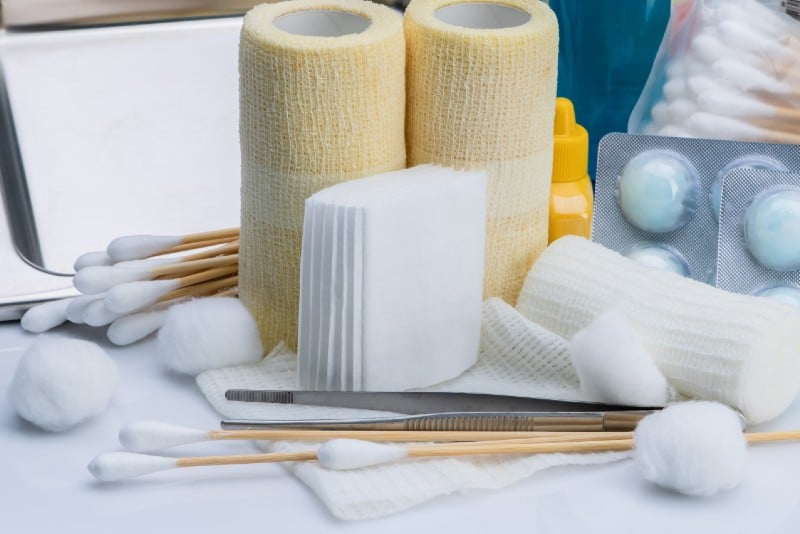Diabetic Wound Care
Take trauma-related incidents out of the picture and then diabetes becomes the leading cause of lower-body extremity amputations. With this in mind, it becomes apparent why caring for diabetic wounds is such a vital matter. Prevention and quick response to cuts and other health issues are central components to diabetic wound care.
A simple, yet highly effective, form of preventative care for your feet is to simply wash, dry, and inspect them on a daily basis. Washing them with warm—not hot—water and mild soap will help remove potential contaminants from your skin. Dry your feet thoroughly, since you want to avoid excess moisture that can promote microbial growth. Since your body has a decreased capacity to generate natural lubricant, use moisturizer to prevent dry, cracked skin. When you inspect your feet for cuts, scrapes, or lesions, like foot ulcers, be sure to check the bottoms and in between your toes.
Foot Ulcers, Neuropathy, and Diabetes
A major source of complications for individuals who live with diabetes is the development of foot ulcers. Poor circulation, friction or pressure, trauma, and neuropathy (lack of feeling) are all factors that can cause these ulcers. Out of these, neuropathy stands out because it diminishes the body’s ability to detect when something is wrong, causes deformities that lead to abnormal pressure, and also contributes to excessively dry skin.
The loss of sensation is especially troublesome for anyone who has diabetes. Pain is a normal indicator that something is wrong with your body. With neuropathy, though, this signal is simply not present and what starts out as a small problem can escalate. Since you were unaware of a painful sensation at the time of injury, you might eventually notice drainage in your socks or swelling of the affected areas. If odor is present, the wound has progressed significantly and you should seek immediate care.
Time is of the Essence
When it comes to diabetic wound care, the keys are to decrease the risk of infection and promote healing as quickly as possible. If you discover a wound in your foot, immediately use triple antibiotic cream on the affected area, gently cover with a light gauze, and keep it free from any pressure. After you have taken these steps, make an appointment with Richardson Podiatry Associates right away and come in to see us as soon as you can.
Once you are at our office, we will follow the appropriate procedures to prevent infection by making sure you receive the necessary medication and have your wounds properly dressed. There are several important components to managing the healing process—reduce pressure on the affected area, keep the wound moist and covered, and maintain the highest possible levels of circulation—and we will ensure that every step is taken to give you the best chance of recovery. It is especially important to control your glucose levels during this time in order to enhance the healing process and reduce complications due to the situation.
At Richardson Podiatry Associates, we can help you establish a plan of preventative care measures so you can avoid any major issues in the first place. If you need wound care for your feet, contact us right away at (972) 690-5374 and schedule an appointment at our Richardson, TX, office. Dr. David Haddad has the experience to provide the high level of care that you need.

